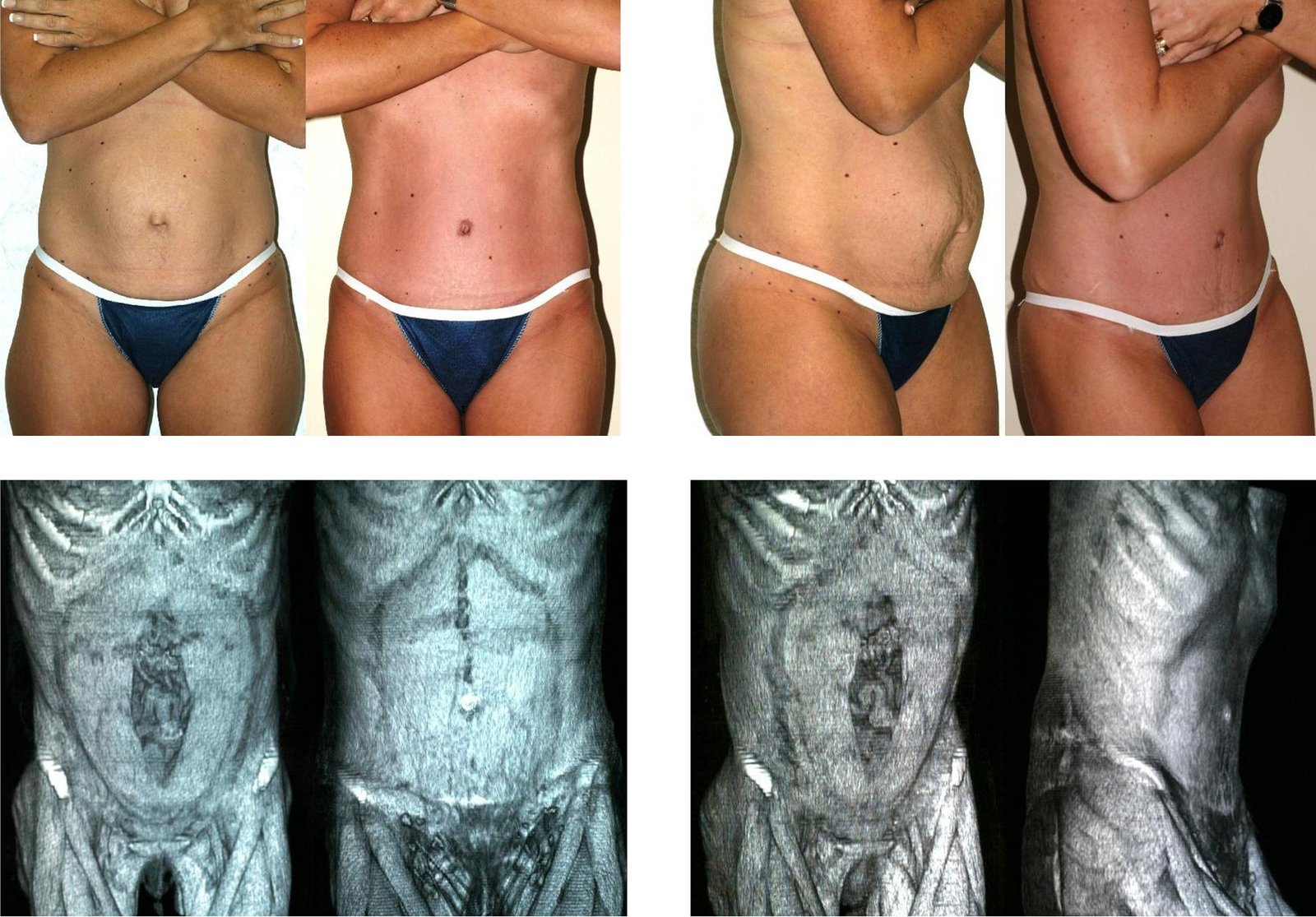Diastasis Recti, the condition commonly known as abdominal separation, can be a setback for individuals striving to regain their pre-pregnancy bodies. Designed to accommodate the growing uterus, this natural separation of abdominal muscles during pregnancy often leaves behind a weakened core. While exercise is vital for strengthening the body and achieving overall fitness, it becomes crucial to approach it with caution when diastasis recti is a part of the equation. Whether you are a new mother or someone dealing with this condition, this article will serve as your ultimate guide to exercising safely and effectively, helping you navigate the journey towards a stronger core and improved well-being. So, tighten those shoelaces and get ready for a mindful approach to fitness that accommodates your body’s unique needs.
Table of Contents
- Understanding Diastasis Recti: What You Need to Know
- Common Mistakes to Avoid When Exercising with Diastasis Recti
- Safe and Effective Exercises for Diastasis Recti Recovery
- Important Tips for a Successful Diastasis Recti Exercise Routine
- The Role of Proper Breathing in Healing Diastasis Recti
- Q&A
- Insights and Conclusions

Understanding Diastasis Recti: What You Need to Know
The Facts about Diastasis Recti
Diastasis Recti, commonly known as abdominal separation, is a condition that affects both men and women. It occurs when the connective tissue (linea alba) between the two rectus abdominis muscles in the abdomen stretches and weakens, causing a noticeable gap to form. This separation can occur during pregnancy, weight gain, improper weightlifting techniques, or even due to genetics.
Understanding diastasis recti is essential for those experiencing it or wanting to prevent it. Here are some key points to keep in mind:
- Signs and Symptoms: Manifestations of diastasis recti may include a soft bulge or protrusion in the midsection, especially when contracting the abdominal muscles. Some individuals experience lower back pain or weakened pelvic floor muscles.
- Diagnosis: A healthcare professional can diagnose diastasis recti by performing a physical examination or using imaging techniques like ultrasound. It is crucial to seek medical advice for an accurate diagnosis and tailored treatment plan.
- Treatment Options: While surgical intervention is a possibility for severe cases, many individuals can manage and improve diastasis recti through non-surgical methods. Regular targeted exercises, such as pelvic tilts, kegels, and specific core exercises, can help strengthen the abdominal muscles and reduce the gap over time.
- Prevention: Pregnant individuals can minimize their risk of developing diastasis recti by maintaining proper posture, avoiding heavy lifting, and engaging in suitable prenatal exercise routines. For others, maintaining a healthy weight and practicing proper abdominal exercises can help prevent or minimize the condition.
In conclusion, understanding diastasis recti empowers individuals to take control of their abdominal health. Recognizing the signs, seeking appropriate medical guidance, and adopting preventive measures or suitable treatments are vital steps to promote healing and overall well-being.

Common Mistakes to Avoid When Exercising with Diastasis Recti
Exercising with diastasis recti requires special attention to avoid exacerbating the condition and hindering the healing process. To ensure an effective and safe workout, here are some common mistakes to avoid:
1. Engaging in unsuitable abdominal exercises: Certain exercises can strain the abdominal muscles and worsen diastasis recti. Avoid movements that involve excessive twisting, crunching, or planks that place excessive pressure on the midsection. Instead, focus on exercises that engage the transverse abdominis, such as pelvic tilts and gentle core movements like bird dogs or modified planks.
2. Neglecting proper breathing techniques: It is essential to practice diaphragmatic breathing during exercise with diastasis recti. Incorrect breathing patterns, such as holding your breath during exertion, can increase intra-abdominal pressure and potentially hinder the healing process. Breathe deeply into your diaphragm, expanding your ribcage while engaging the pelvic floor for optimal support.
3. Overdoing it too soon: Patience is key when recovering from diastasis recti. Pushing yourself too hard or progressing too quickly can delay healing and potentially cause more harm. Gradually increase the intensity and duration of your workouts, listening to your body’s cues and respecting its limits. Remember, small steps in the right direction are better than rushing through the recovery process.
By avoiding these common mistakes, you can support your diastasis recti healing journey and gradually regain strength and stability in your core muscles. Always consult with a healthcare professional or physiotherapist before starting an exercise routine to ensure it aligns with your individual needs.
Safe and Effective Exercises for Diastasis Recti Recovery
Diastasis Recti, a condition characterized by the separation of abdominal muscles during pregnancy or excessive weight gain, can be a challenge to overcome. However, with the right exercises, you can effectively recover and restore the strength of your core muscles. Here are some safe and effective exercises recommended by experts:
- Pelvic tilts: Lie on your back with your knees bent. Gently tilt your pelvis backward, pressing your lower back into the floor. Hold for a few seconds, then release. Repeat this movement to strengthen your deep abdominal muscles.
- Transverse abdominal engagement: While seated or standing, draw your belly button towards your spine, engaging your transverse abdominals. Hold for a few seconds, then release. This exercise helps activate and strengthen the deep muscles of the core.
- Bird dog exercise: Get on all fours with your hands directly under your shoulders and knees under your hips. Slowly extend your right arm forward while simultaneously lifting your left leg straight back. Hold for a few seconds, then return to the starting position. Repeat on the opposite side. This exercise helps stabilize and engage the entire core.
- Bridge pose: Lie on your back with your knees bent and feet flat on the floor. Press your feet into the ground and lift your hips, forming a straight line from your shoulders to your knees. Hold for a few seconds, then lower down. This exercise strengthens the glutes, hamstrings, and core muscles.
Remember to start slowly and listen to your body. If you experience any pain or discomfort, consult with a healthcare professional. Consistency is key, so aim to incorporate these exercises into your routine a few times a week for optimal diastasis recti recovery. Stay dedicated, and you’ll be on your way to a stronger core in no time!
Important Tips for a Successful Diastasis Recti Exercise Routine
When it comes to diastasis recti, it’s essential to have an exercise routine that focuses on healing and strengthening the abdominal muscles. Here are some important tips to ensure the success of your diastasis recti exercise routine:
- Start slow and progress gradually: Rome wasn’t built in a day, and neither will your core strength, so be patient with yourself. Begin with gentle exercises that target the transverse abdominis, such as pelvic tilts and Kegels. As you gain strength, gradually incorporate more challenging moves like planks or modified push-ups.
- Focus on proper form: While performing any exercise, it’s crucial to maintain correct form to prevent further strain on your abdominal separation. Engage your core and be mindful of any bulging or coning that may occur while exercising. Avoid movements that exacerbate the condition, such as traditional crunches or sit-ups.
- Include exercises targeting all core muscles: Diastasis recti affects the abdominal muscles, but a successful exercise routine should also engage other muscles that support the core, such as the pelvic floor and back muscles. Incorporate exercises like bird-dogs, bridges, and pelvic floor exercises to ensure overall core strength.
- Listen to your body: Pay attention to any discomfort or pain during your exercise routine. If an exercise feels too challenging or causes discomfort at your abdominal separation, modify or skip it. Always consult with a healthcare professional or a qualified fitness trainer specialized in diastasis recti if you have any concerns.
By following these important tips, you’ll be on your way to a successful diastasis recti exercise routine. Remember, consistency and patience are key, so don’t get discouraged. With time and effort, you can strengthen your core and regain the stability your body deserves!
The Role of Proper Breathing in Healing Diastasis Recti
Diastasis Recti is a common condition that occurs when the abdominal muscles separate during pregnancy or due to excessive strain. While there are various approaches to treating this condition, one often overlooked aspect is the role of proper breathing techniques in aiding the healing process. By incorporating specific breathing exercises into your daily routine, you can strengthen your core muscles, create stability, and promote the recovery of diastasis recti.
One effective breathing technique to consider is diaphragmatic breathing. This technique helps to engage the diaphragm muscle, which is responsible for deep breathing and providing support to the core. To practice diaphragmatic breathing, start by sitting or lying down in a comfortable position. Place one hand on your chest and the other on your belly. Inhale deeply through your nose, allowing your belly to rise and expand while keeping your chest relatively still. Exhale through your mouth, letting your belly naturally fall. Repeat this pattern for a few minutes, focusing on the sensation of your breath filling your lower abdomen.
In addition to diaphragmatic breathing, incorporating exercises that emphasize breath control and engage the core muscles can greatly benefit individuals with diastasis recti. Pilates, yoga, or specialized postnatal fitness programs often include specific breathing techniques paired with movements that target the transverse abdominis and pelvic floor. These exercises aim to address the weakened abdominal muscles, improve posture, and provide overall stability during movements.
Remember, healing diastasis recti is a gradual process that requires patience and consistency. Alongside appropriate exercises and therapies, focusing on proper breathing techniques can significantly contribute to your recovery. Ensure to consult with a qualified healthcare professional or a specialized trainer to develop a personalized plan that suits your specific needs and aims to heal your diastasis recti effectively and safely.
Q&A
1. How does diastasis recti affect exercise routines?
Diastasis recti affects the stability of the core muscles, so exercises that strain or put excessive pressure on the midsection should be avoided. It is important to modify exercises to prevent further separation of the abdominal muscles.
2. Are there any exercises that are safe to do with diastasis recti?
Yes, exercises that strengthen the pelvic floor and deep abdominal muscles, such as Kegels and gentle core exercises, are generally safe for individuals with diastasis recti. However, it is always advisable to consult with a healthcare professional for personalized recommendations.
3. How can I modify my exercise routine to accommodate diastasis recti?
To modify your exercise routine, focus on engaging the transverse abdominis muscle by drawing your belly button towards your spine during movements. Avoid exercises that cause bulging or coning in the midsection and opt for low-impact activities that minimize strain on the abdominal muscles.
4. Is it safe to perform traditional abdominal exercises with diastasis recti?
Traditional abdominal exercises such as sit-ups and crunches should be avoided as they can worsen diastasis recti by putting unnecessary strain on the already weakened connective tissue. Opt for alternative exercises that target the deep core muscles without causing excessive separation.
5. Can I still engage in cardiovascular exercises with diastasis recti?
Yes, low-impact cardiovascular exercises like walking, swimming, or using an elliptical machine are generally safe for individuals with diastasis recti. However, it is essential to maintain proper form and listen to your body’s cues to avoid exacerbating the condition.
6. How can I tell if I’m overexerting myself during exercise?
If you experience pain, discomfort, or pressure in your abdominal area while exercising, it is a sign that you may be overexerting yourself. Additionally, any bulging or doming of the abdominal muscles is an indication of excessive strain and means it’s time to modify the exercise or take a break.
7. Are there any warning signs I should be aware of while exercising with diastasis recti?
Be cautious of symptoms such as heaviness or dragging sensation in the pelvic area, urine leakage during exercise, or a feeling of instability in the core. If any of these warning signs occur, it is advisable to consult with a healthcare professional for further guidance.
8. Can diastasis recti be completely healed through exercise?
While exercise can help improve the strength and function of the abdominal muscles, in some cases, diastasis recti may require surgical intervention for complete healing. It is crucial to work closely with a healthcare professional to determine the most suitable treatment plan for your specific condition.
9. Are there any specific precautions I should take before starting an exercise routine with diastasis recti?
Prior to starting an exercise routine, it is important to get clearance from your healthcare provider. They can provide valuable guidance and recommend exercises tailored to your specific needs and the severity of your diastasis recti.
10. Can I still lift weights or engage in strength training with diastasis recti?
Lifting weights and engaging in strength training exercises can be done with caution and appropriate modifications. It is crucial to focus on proper form and technique, engaging the core muscles without putting excessive strain on the abdominal area. Consulting with a healthcare professional or a specialized trainer can be beneficial for individual guidance.
Insights and Conclusions
As we reach the end of this informative journey, one thing becomes abundantly clear: the power of knowledge. Safely exercising with diastasis recti is not only possible but essential in your quest for a stronger and healthier core. While the road may seem challenging at times, remember that the key lies within your hands. With dedication, patience, and an unwavering commitment to yourself, you can conquer any obstacles that come your way.
So, embrace your journey ahead with confidence and grace. Remember to always listen to your body, paying close attention to its unique needs. Seek guidance from knowledgeable professionals, like physiotherapists or trainers experienced in diastasis recti. And perhaps, most importantly, be gentle with yourself. Rome wasn’t built in a day, and neither will your progress be. Every step, no matter how small, is a triumph worth celebrating.
You are not alone on this path; a community of individuals facing the same challenges stands ready to support and uplift you. Reach out, share your stories, and draw strength from the collective wisdom of those who have walked this path before you.
In closing, let us remember that diastasis recti does not define you. It is merely a part of your journey, a chapter in the beautiful story of your life. So, lace up your sneakers, don your workout gear, and let your determination shine through. With careful exercise, a steadfast mindset, and the knowledge gained from this article, you have all the tools necessary to embrace a stronger, healthier, and more vibrant you.
Now, go forth, dear reader, and conquer your diastasis recti journey. The world awaits the unveiling of your inner strength and the blossoming of your newfound self. Keep pushing forward, never giving up, and trust that the path towards wellness will lead you to a life filled with boundless joy and vitality.
As an affiliate, my content may feature links to products I personally use and recommend. By taking action, like subscribing or making a purchase, you’ll be supporting my work and fueling my taco cravings at the same time. Win-win, right?
Want to read more? Check out our Affiliate Disclosure page.